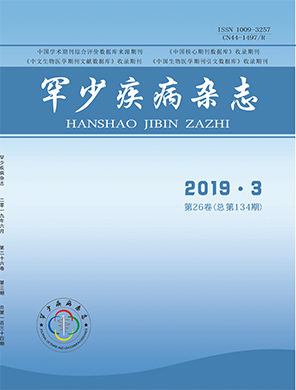摘要
目的 比较腹腔镜下辅助D2全胃切除术与传统开腹D2全胃切除术的手术效果。方法 回顾性分析我院收治的180例胃 癌患者的临床资料,所有患者均采用根治性D2全胃切除术,其中,观察组90例患者采取腹腔镜下辅助D2全胃切除 术,对照组90例患者采取传统开腹D2全胃切除术,比较两组患者的手术效果。结果 观察组患者的手术时间、术中 出血量、术后排气时间、术后住院时间分别为(254.3±26.5)min、(139.2±34.6)ml、(3.3±0.8)d及(10.3±1.5) d,等均明显优于对照组患者(207.3±24.6)min、(266.5±58.7)ml、(5.7±1.2)d及(13.5±1.8)d,组间差异具有 统计学意义(P<0.05),手术后1个月,腹腔镜组患者的CRP较传统开腹组患者出现了明显改善,组间差异具有统计 学意义(P<0.05);两组患者的肿瘤标志物CEA、CA199、CA125水平均显著下降,且组间差异无统计学意义,观察组 患者并发症发生率为15.5%(14/90),明显低于对照组患者(28.9%),组间差异具有统计学意义(P<0.05)。结论 采 用腹腔镜辅助根治性D2全胃切除术与传统开腹术具有基本一致的效果,而腹腔镜由于其微创特点,对机体的损伤也 明显较低,对患者的创伤较小,有利于患者术后早期恢复,促进患者预后,值得临床应用。
Objective To compare the efficacy of traditional open surgical D2 gastrectomy and gastrectomy D2 laparoscopic. Methods 180 cases of gastric cancer patients were included in the study, in which 90 patients in the observation group took laparoscopy By assist D2 total gastrectomy, 90 patients in the control group are taking traditional open D2 total gastrectomy, surgical results between the two groups of patients. Results The patient's operation time blood loss, postoperative exhaust time, postoperative hospital stay were (254.3±26.5)min,(139.2±34.6)ml,(3.3±0.8)d,(10.3±1.5) d and significantly better than the control group of patients (207.3±24.6)min,(266.5±58.7)ml,(5.7±1.2)d、 (13.5±1.8)d, the difference was statistically significant (P<0.05) between the two groups, one month after surgery, abdominal mirror group of patients with CRP compared with traditional open a significant improvement in patients, the difference was statistically significant (P<0.05) between the two groups; tumor markers CEA two groups of patients, were significantly decreased CA199, CA125 water, and between-group differences no significant complication rate was observed in patients 15.5% (14/90), significantly lower than the control group of patients (28.9%), the difference was statistically significant (P<0.05) between the two groups. Conclusion Laparoscopic assisted radical total gastrectomy with D2 traditional open surgery has basically the same effect, but because of its minimally invasive laparoscopic characteristics, damage to the body is also significantly lower, less trauma to the patient, there is help patients early postoperative recovery, promote prognosis, worth clinical application.
【关键词】腹腔镜术;传统开腹;D2全胃切除术;胃癌
【中图分类号】R735.2
【文献标识码】A
【DOI】10.3969/j.issn.1009-3257.2019.03.010
前言
胃癌是目前临床上最为常见的消化系恶性肿瘤之 一,有研究显示,在我国,早期胃癌的发现率仅为3% 左右,而大部分患者均为进展期胃癌。胃癌D2根治术 是进展期胃癌的治疗金标准,有利于提高患者的生存 期,降低患者的死亡率[1-2]。标准的胃癌D2根治术是 指,肿瘤在没有远处转移的前提下,切除近端或远端 胃的2/3或全胃,并清扫肿瘤生长部位相应的第1站和 第2站区域淋巴结的手术[3]。
近年来,随着微创技术的不断发展与进步,胃癌 腹腔镜手术在临床上取得了较佳的临床效果,且有取 代胃癌传统开腹术的趋势[4]。而且,已有临床研究报 道[5],腹腔镜辅助全胃切除术是安全和有效的。然 而,有关腹腔镜辅助全胃切除术和传统开腹全胃切除 术进行临床疗效对比的研究则报道不多。本研究回顾 性分析我院2014年8月至2016年6月收治的180例胃癌 患者的临床资料,所有患者均采用了根治性D2全胃切除术,其中,观察组90例患者采取了腹腔镜下辅助D2 全胃切除术,而对照组90例患者则采取传统开腹D2全 胃切除术,报道如下。
罕少疾病杂志
第26卷, 第 3 期
2019年05月

相关文章